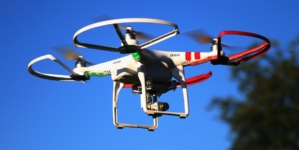-
The EU is Trying to Change the Rules of Political Competition, Claims Prof. Stumpf in Warsaw Lecture - 20 mins ago
-
Trump Says He’ll ‘Take a Look’ at Elon Musk’s Government Contracts - 23 mins ago
-
Rangers vs. Nationals Highlights | MLB on FOX - 24 mins ago
-
The exciting world of podcasts - 45 mins ago
-
John Force Racing Announces Collaboration For New Philanthropic Initiative - about 1 hour ago
-
Cubs vs. Tigers Highlights | MLB on FOX - about 1 hour ago
-
Almanac: The opening of Macy’s - about 1 hour ago
-
Fan-Favorite AEW Star Eddie Kingston Gives Positive In-Ring Return Update - 2 hours ago
-
LIV Golf Virginia: Bryson DeChambeau, Martin Kaymer leading after Round 1 - 2 hours ago
-
The 2008 banking crisis: Are we due another? - 2 hours ago
Rare Draconid meteor shower to illuminate California’s evening sky
Weather permitting, Californians may be in for a treat over the next few days as the Draconid meteor shower returns, producing stunning streaks of light in the night sky.
The meteor shower, which began Sunday and ends Thursday, will likely peak Monday night with higher chance of viewing them in North America on Tuesday night, according to the online journal Earth Sky.
The Draconid meteor shower happens every October as the Earth passes through a trail of ice and rock left by the comet 21P/Giacobini-Zinner, which travels around the sun every 6½ years, according to NASA.
Streaks of light, commonly referred to as shooting stars, appear in the night sky when a piece of dust or other debris encounters the Earth’s atmosphere and burns up.
The Draconid meteor shower gets its name from the northern constellation of Draco the Dragon, the direction the meteors appear to be coming from. They are also referred to as Giacobinids, in honor of Michel Giacobini, who discovered the comet in 1900.
What makes Draconids rare is that they are visible throughout the night, unlike other meteor showers that are primarily visible between midnight and predawn hours. They also move across the sky at a leisurely pace. The American Meteor Society considers the Draconids as variable meteor showers because they can produce little activity or, on rare occasions, illuminate the sky with hundreds of shooting stars.
In 2011 for instance, sky watchers around the world reported a peak of 660 meteors per hour, Earth Sky reported. The following year, there were 1,000 meteors per hour, according to Spaceweather, an online news site.
To view the Draconids, first drive away from the city’s light pollution, then look to the northern constellation of Draco. No binoculars are required, as meteors will be visible to the human eye, but don’t forget a blanket and a warm beverage.
Source link































